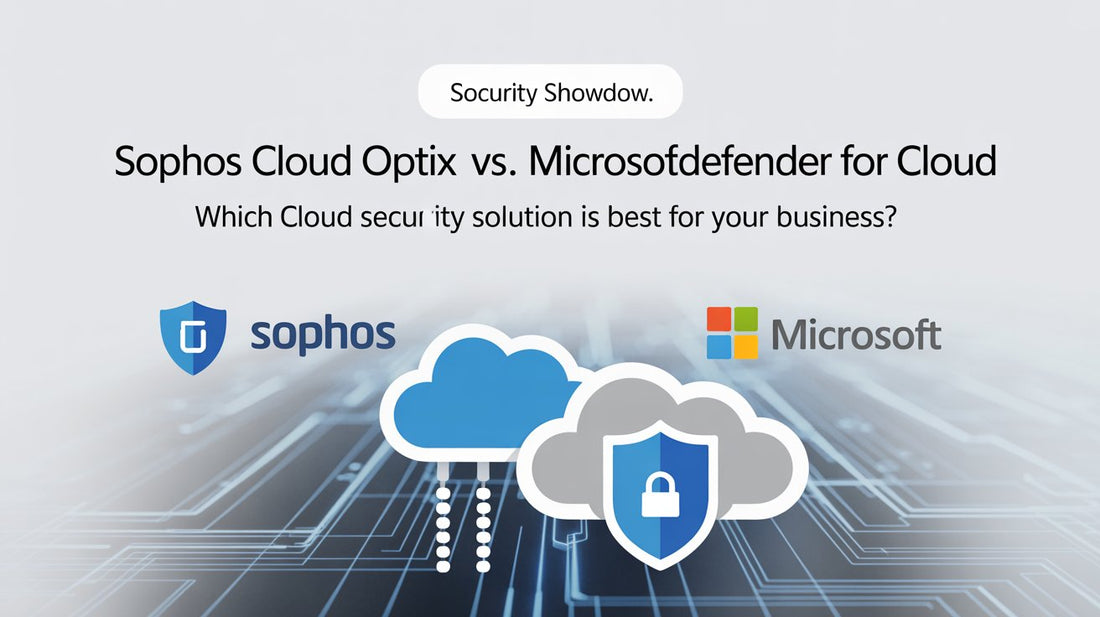
Sophos Cloud Optix vs Microsoft Defender for Cloud: Best Cloud Security for Your Business
Share
Introduction: Sophos Cloud Optix vs Microsoft Defender for Cloud
Choosing the right cloud security tool is important for every business. The main keyword, Sophos Cloud Optix vs Microsoft Defender for Cloud, is at the heart of this guide. Both tools help protect your data and cloud systems. However, they work in different ways. In this article, we will compare their features, benefits, and what makes each one unique.
What Makes Sophos Cloud Optix Stand Out?
Sophos Cloud Optix is known for its strong cloud security. It gives you a single view of all your cloud platforms, like AWS, Azure, and Google Cloud. This makes it easy to spot and fix problems fast. Mistakes are avoided when you can see everything in one place.
Key Features of Sophos Cloud Optix:
- Monitors all your cloud accounts from one dashboard.
- Scans for threats in real-time.
- Checks your code for risks before you launch new apps.
- Works well with Infrastructure-as-Code tools.
Sophos Cloud Optix vs Microsoft Defender for Cloud is a common search because businesses want to know which tool gives better value. With Sophos, you do not need extra add-ons for full features. Everything is included.

Microsoft Defender for Cloud: A Trusted Choice for Many
Microsoft Defender for Cloud is another top choice. It is deeply connected with other Microsoft products. This means if you already use Microsoft tools, Defender fits right in.
Main Benefits of Microsoft Defender for Cloud:
- Gives you security tips and fixes.
- Protects many types of cloud resources.
- Offers free Cloud Security Posture Management (CSPM) for basic needs.
- Supports multi-cloud setups, including Google Cloud.
With Defender, security data from different sources is shown in one place. This saves time and helps teams act quickly. However, some features, like DevOps security, may need extra purchases. 

Sophos Cloud Optix vs Microsoft Defender for Cloud: Which Should You Choose?
When comparing Sophos Cloud Optix vs Microsoft Defender for Cloud, it is best to look at your needs. Here are some fresh tips to help you decide:
- If you use many cloud platforms, Sophos Cloud Optix gives a better single view.
- For companies using lots of Microsoft tools, Defender for Cloud is easier to set up.
- Sophos includes Infrastructure-as-Code security without extra cost.
- Defender for Cloud is great for teams who want simple security across Microsoft and Google Cloud.
- Sophos is praised for easy setup and strong support.
- Defender saves time by showing all alerts in one place.
Quick Comparison Table:
|
Feature |
Sophos Cloud Optix |
Microsoft Defender for Cloud |
|
Single dashboard for all clouds |
Yes |
Yes |
|
Extra cost for DevOps security |
No |
Yes |
|
Deep Microsoft integration |
No |
Yes |
|
Real-time code scanning |
Yes |
Limited |
|
Free basic CSPM |
No |
Yes |
Steps to Choose the Right Cloud Security Tool
- List your main cloud platforms (AWS, Azure, GCP, etc.).
- Decide if you need extra DevOps or code security.
- Check if you already use Microsoft tools.
- Compare costs, including add-ons.
- Try a demo or free trial if possible.
Conclusion
Both Sophos Cloud Optix and Microsoft Defender for Cloud offer strong cloud security. The best choice depends on your business setup and needs. Sophos Cloud Optix is better for multi-cloud and code-first teams. Microsoft Defender for Cloud is top for companies using many Microsoft services. By understanding your needs and using this guide, a smart choice can be made.
 Shipping Policy
Shipping Policy
 24/7 Customer Support
24/7 Customer Support
 Login/Register
Login/Register
